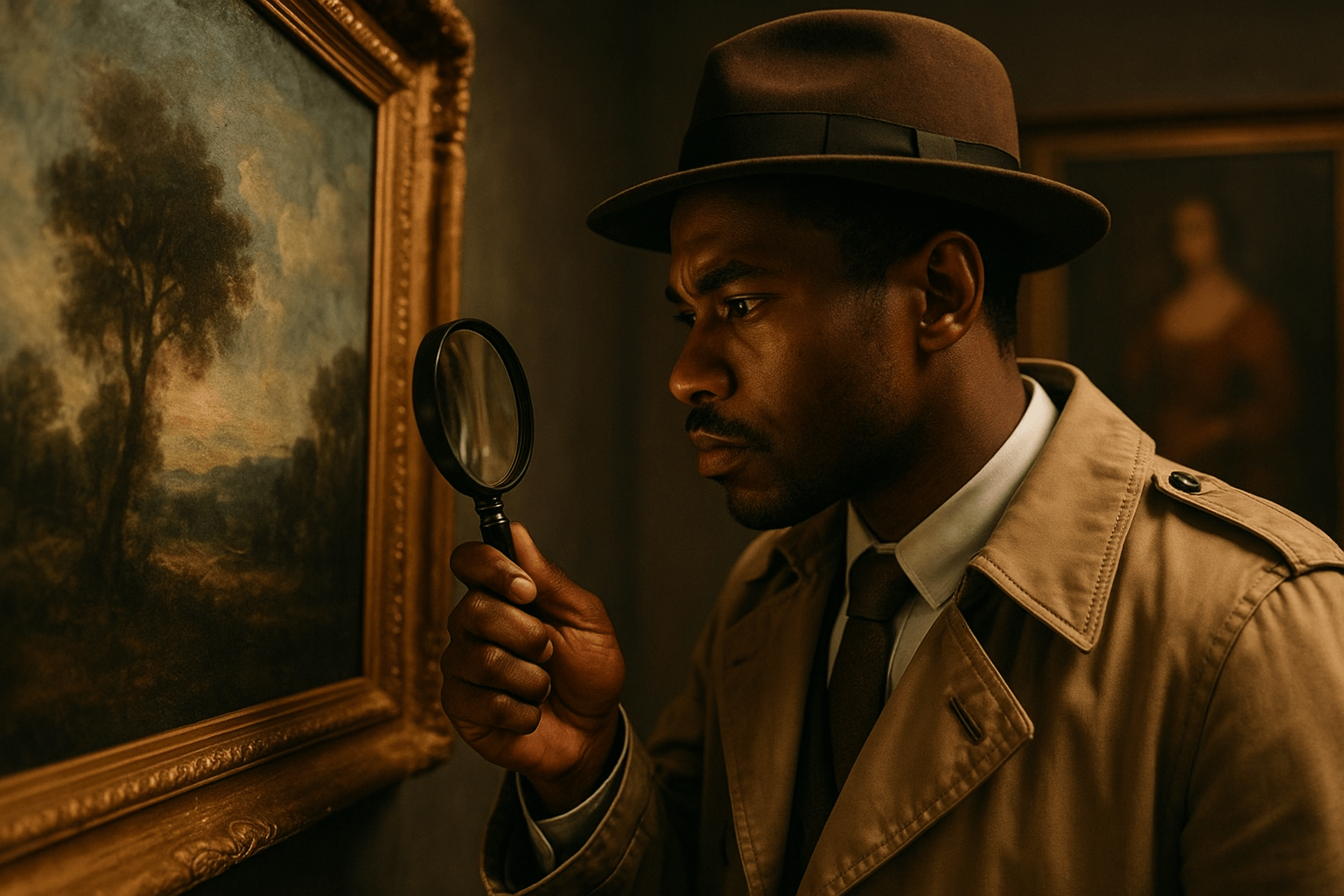From Thrift Store Find to Masterpiece: The Art Detective's Quest
We’ve all heard the tantalizing story: someone picks up a dusty painting at a garage sale or local Goodwill for a few dollars, only to discover it’s a long-lost masterpiece. It’s the stuff of dreams. But what happens after that thrilling discovery? How does a hunch transform into a certified attribution?
The journey is a fascinating one, led by a special kind of sleuth: the art detective. This is a deep dive into the meticulous work that authenticates artworks, a process that is equal parts historical research and cutting-edge science.
The First Clue: The Eye of the Connoisseur
It often starts with a feeling. You’re drawn to a painting—the composition, the emotion, the distinct style. A name pops into your head: "This reminds me of a Walter Anderson landscape," or "Could this be a Clementine Hunter?"
The art detective begins with this same visual analysis, a practice known as connoisseurship. They examine the brushwork, the draftsmanship, the color palette, and the subject matter. Does the technique align with the artist’s known practices? Is the composition consistent with their body of work? This expert eye forms the foundational opinion that determines if the investigation is worth pursuing.
Tracing the Paper Trail: The Power of Provenance
If the artwork passes the initial visual test, the next phase is historical detective work. This is the search for provenance—the documented history of the artwork’s ownership.
A strong provenance is a powerful chain of evidence. It answers the critical questions: Who owned this piece? When did they own it? Where did they get it? An unbroken line stretching back to the artist’s studio is the closest thing to a smoking gun in the art world. This is also why it's so important for contemporary collectors to obtain a Certificate of Authenticity when purchasing work from a living artist; that single document becomes the first link in a future provenance chain.
A handwritten note found on the back of a portrait, recording details of the artist, sitter and date.
The Science Lab: Forensic Analysis
When the paper trail is thin or needs corroboration, the investigation moves into the realm of forensic science.
Material Science: Artists are products of their time, and so are their materials. For example, the vibrant ultramarine blue made from crushed lapis lazuli was so rare and expensive in the Renaissance that its presence alone can signal a work commissioned by a wealthy patron. Conversely, certain synthetic pigments weren't invented until specific dates. If a painting supposedly from the 18th century contains a pigment created in the 20th, it’s a certain forgery.
High-Tech Scrutiny: Experts use tools like:
X-ray and Infrared Imaging: To see under the surface, revealing preliminary sketches and changes the artist made.
Gas Chromatography-Mass Spectrometry: This technique analyzes the chemical makeup of a tiny paint sample, identifying the exact oils, resins, and pigments used. This can pinpoint the painting’s age and debunk a modern forgery.
Infrared Reflectography (IRR) can make pigments transparent. In this example, the green paint of the vest becomes transparent just in the IRR image, revealing the underdrawing.
These scientific methods can definitively debunk a forgery or powerfully support an attribution by confirming that every component is period-appropriate.
The High Stakes of Authentication
This rigorous process is not cheap or quick. Forensic analysis, archival research, and consultations with top scholars can cost tens of thousands of dollars. This is the final, sobering consideration. Is the dream of a masterpiece worth the very real risk of a costly, inconclusive, or negative result?
But the potential reward—both financial and cultural—is what fuels the pursuit. The authentication of a major work doesn't just create a millionaire; it can restore a vital piece of our shared cultural heritage. Discovering a lost work by a major artist enriches our understanding of history and ensures their legacy endures.
The Case of the Unfinished Mystery: Salvator Mundi
“Salvator Mundi”, oil on walnut panel believed to have been painted by Leonardo da Vinci, c. 1500.
Even the most exhaustive investigation can sometimes leave questions unanswered. The most famous modern example is the Salvator Mundi, a painting of Christ attributed to Leonardo da Vinci. It sold for a record $450 million, and an immense, costly international investigation was launched.
Yet, the result was not a definitive "yes." Some top experts championed it as a Leonardo, while others just as firmly rejected the attribution.
And here, the story takes a modern twist. Unlike masterpieces in museums that we can visit and judge for ourselves, the Salvator Mundi has virtually disappeared from public sight since its sale. This absence has only amplified its mystery. The debate about its authenticity now lives almost entirely in academic journals, art news, and global conversation. It has become a ghost—a painting more famous for its price tag and controversy than for the experience of viewing it.
This phenomenon shows that the art detective's work doesn't always lead to a final conclusion. Sometimes, it creates a powerful mythology. The quest to authenticate the Salvator Mundi transformed it into a global icon of mystery, value, and debate, proving that an artwork's story can sometimes become as compelling as the image itself.
And that, ultimately, is what the art detective enables. Their work—a blend of intuition, history, and science—brings us closer to the truth of an object. It allows us to stand before a painting with confidence, to know the hand that created it, and to fully absorb the beauty, history, and spirit the artist left behind. It is a vital service that protects our past and deepens our shared cultural experience for generations to come.




